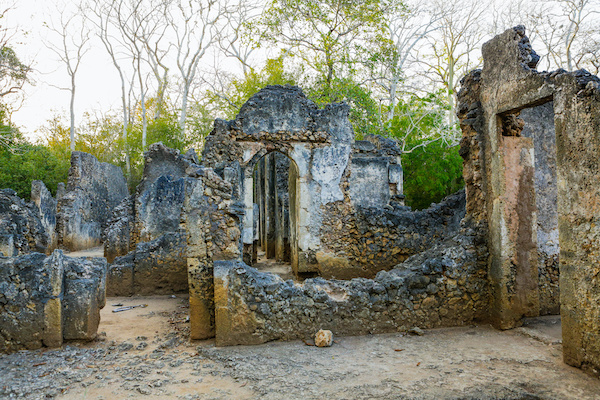
While knights jousted their way through medieval Europe, the Swahili civilization was making a name for itself on the East African coast.
In coral-stone towns, this unique society flourished and established vast trade networks across the Indian Ocean.
But the question that has left experts debating for over a century is: who exactly were the Swahili people, and what role did outsiders play in shaping their civilization?
At last, the largest-ever analysis of ancient African DNA has broken the deadlock, providing fascinating insights into the Swahili civilization's origins and its intriguing blend of cultural influences.
The Swahili Coast: A Surprising (or Not) Blend of Cultures
The study, recently published in Nature, examined ancient DNA from 80 individuals dating between 1300 CE and 1900 CE and revealed that the Swahili coast had been quite the social hotspot in the medieval days.
Researchers were surprised to find significant Southwest Asian influence in the Swahili people's DNA. It's estimated that Southwest Asian people began migrating to the Swahili coast around the year 1000 CE and intermingled with the African locals for centuries.
This blending of cultures contributed to almost half of the ancestry of the ancient individuals analyzed in the study. It's like a historical "party" that lasted for over a millennium, with African people mingling and creating families with immigrants from other parts of Africa and the Indian Ocean region.
And while the different populations mixed, the core of Swahili culture remained African and Bantu in nature. This includes their primary language, architecture, cuisine, and cultural practices.
An End to the Debates and Validation for Oral Tradition
The study's findings put a playful twist on some long-standing scholarly debates...
On the one hand, there were colonial-era beliefs that the Swahili civilization was too sophisticated and advanced to be "African" in origin, that the elegant architecture and society must have been constructed by foreign influences.
On the other hand, all the archaeological evidence suggests those colonial-era beliefs are as outdated and ignorant as they sound. As stated before, the language, architecture, and food all appeared to be purely African in culture.
Now, the Swahili coast's ancient DNA has sent both theories packing, instead proving the Swahili people's own origin stories about themselves. Swahili oral tradition has passed down stories of a cultural mix for centuries.
The Persian and Arabian Plot Twists
In a surprising twist, the genetic research revealed that the first wave of newcomers to the Swahili coast was mainly Persian.
This lines up with the oldest Swahili oral stories, which tell of Persian merchants arriving on their shores.
It's fascinating to think that Swahili oral history was not only spinning a captivating yarn, but also accurately depicting the genetic ancestry and cultural legacy of the region.
As the centuries rolled on, the ancestry sources on the Swahili coast started shifting from Persian to Arabian.
This change in the genetic makeup of Swahili coast communities continued as intermingling with other Asian and African populations further enriched the cultural tapestry.
What We Can Learn From the Swahili Civilization's Genetic History
It's clear that the Swahili civilization was a master of cultural fusion, embracing influences from Persia, Arabia, and other regions while still maintaining its African roots.
It's a beautiful reminder that societies can evolve and grow stronger by embracing diversity and learning from one another.
Moreover, the study also serves as a testament to the power of ancient DNA research. By unlocking the genetic secrets of the past, we can gain a better understanding of historical events and challenge long-standing assumptions about our ancestors.
In the end, the story of the Swahili coast teaches us that history is not a strict narrative, but rather a vibrant, colorful tapestry woven from countless threads of human experience.